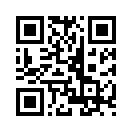Music vs. the music industry
Some excerpts from an interview on the future of the music industry. I was being specific about one industry, but I think it applies to just about everything:
The music industry is really focused on the ‘industry’ part and not so much on the ‘music’ part. This is the greatest moment in the history of music if your dream is to distribute as much music as possible to as many people as possible, or if your goal is to make it as easy as possible to become heard as a musician. There’s never been a time like this before. So if your focus is on music, it’s great. If your focus is on the industry part and the limos, the advances, the lawyers, polycarbonate and vinyl, it’s horrible. The shift that is happening right now is that the people who insist on keeping the world as it was are going to get more and more frustrated until they lose their jobs. People who want to invent a whole new set of rules, a new paradigm, can’t believe their good fortune and how lucky they are that the people in the industry aren’t noticing an opportunity...
I define a tribe as a group of people sharing a common culture, a goal, a mission, probably a leader. There are tribes of people – like the ones who go to South by Southwest – who are connected because they want to remake the music industry. There is the tribe of people who follow Bruce Springsteen and will pay unreasonable amounts of money to hear him live and compare playlists. The important distinction here is that music labels used to be in the business of grabbing shelf space, on the radio and in the record store. Now, the music industry needs to realign and be in the business of finding and connecting and leading groups of people who want to follow a musician and connect with the other people who want to do the same...
In the ‘70s or ‘80s you listened to a song because “everyone else” was also listening to it. That’s the definition of pop music. In those days we defined “everyone else” as people in our high school or people who listened to WPLJ. Now, “everyone else” is not defined by where you live or what radio station you listen to. It’s defined by which horizontal or vertical slice of the world you connect yourself with. I might listen to Keller Williams because everyone else in my world includes frustrated Deadheads. We don’t have new Grateful Dead to listen to, so everyone else in my circle is listening to Keller Williams, so he is pop to us. He’s not pop to the kids at the middle school who have never heard of him, right? So you end up with all these silos and niches and lots and lots of ways to look at the world...
Digital is about to surpass the CD, and once it starts to happen it’s going to happen faster and faster and faster. The more interesting thing to me is who is going to control the playlist. If there is an infinite amount of music available – and I would argue that as soon as the amount of music available exceeds the amount of time you have in your life, that’s infinite – somebody will have the leverageable spot of deciding what to listen to next. And it’s unclear whether someone will charge to tell me that or will pay to tell me that. It’s still up for grabs in every one of these vertical silos. Who are the tastemakers and how do these ideas spread? The analogy I like to give is if you’re an author and Oprah Winfrey calls, you don’t say, “How much are you going to pay me to go on your show and give away all the ideas in my book?” In fact, if you could you would pay to be on Oprah. For a really long time the music industry has had two minds: On the one hand, they would pay money to be on Clear Channel or MTV; on the other hand, they would charge you money to hear their music in concert or out of your stereo. Those days are all getting intermingled now. “I am the program director of my radio station, so where’s my payola?”
R&G: When a band brands itself, there is a credibility issue with their fan base; they run the risk of being perceived as a sellout.
Seth: I think the first thing I’d ask is, “perceived as a sellout by whom?” Some people say Patricia Barber is a sellout because she’s a popular jazz musician as opposed to a starving jazz musician. But the people in the crowd don’t think that. I think selling out is largely about expectation, about being transparent and telling the truth to your audience. When Talking Heads went from being unsuccessful at CBGB to being really successful on MTV and making a movie with Jonathan Demme, some people said they sold out. Other people said they wished they were more pop-like. I’m not sure that’s something that needs to be at the beginning of the conversation. I think that what you have to do is make it clear to your tribe and to yourself what you stand for, and do that.
Sphere: Related Content


















